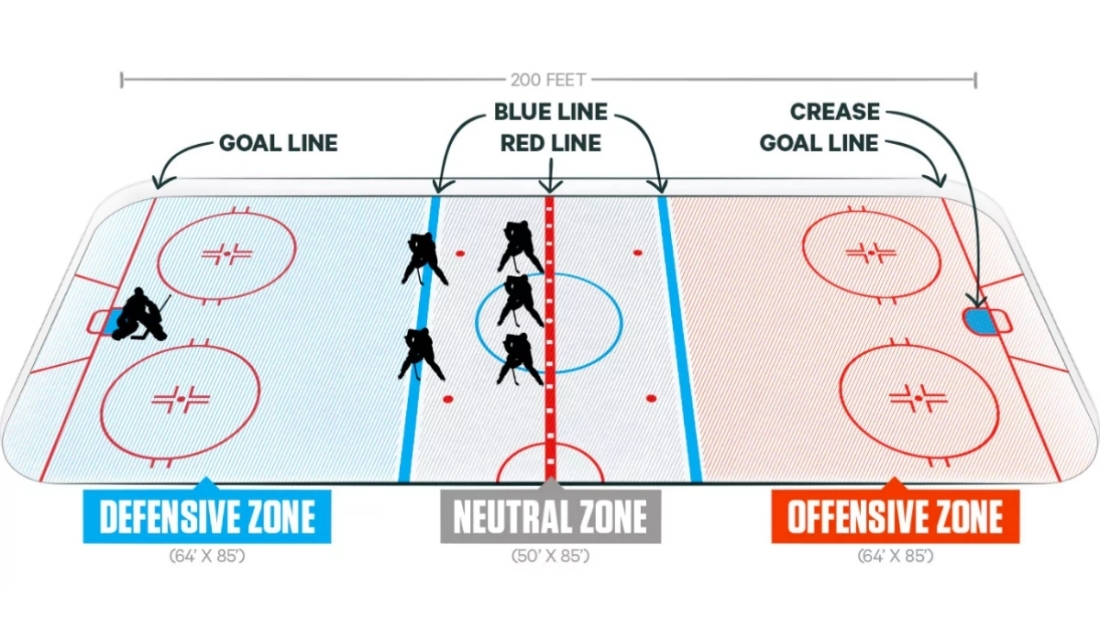This one is for the young fans of the NHL.
How one rule change that sparked intense debate among players, coaches, and fans across the league. The elimination of the two-line pass rule was a decision made by the league designed to create new opportunities for offensive plays and goal creation.
Before the infamous 2005 NHL Lockout, the two-line pass rule restricted teams from making a pass that crossed both the center red line and your own team’s blue line. This rule was put in place to prevent teams from shooting the puck down the ice without methodically working it up the ice. However, critics argued that it stifled creativity and can be seen as a bailout for defensive players.
By doing away with the two-line pass rule, the NHL aimed to inject more excitement and scoring chances into the game.
The Purpose of the Two-Line Pass Rule in Ice Hockey
The two-line pass rule has a long history in ice hockey. It was first introduced in the early 1940s as a way to prevent teams from exploiting the long pass strategy.
This rule forced teams to maintain possession of the puck and work their way up the ice through shorter, more controlled passes. By limiting the length of passes, the two-line pass rule aimed to create a more strategic and tactical game, where teams had to rely on teamwork and skill to generate scoring opportunities. Kind of makes you think how many more points some all-time great scorers would have if this rule wasn’t in place during their time.
However, as the game evolved and players became faster and more skilled, the two-line pass rule started to face criticism for its impact on the flow and excitement of the game.
Another criticism of the two-line pass rule is that it leads to a more defensive style of play. Teams are often forced to dump the puck into the offensive zone instead of making long passes, resulting in more stoppages of play and a slower tempo. Critics argue that this rule hinders the flow and excitement of the game, as teams are discouraged from making risky, high-reward plays.
However, there were also skeptics who feared that removing the two-line pass rule would result in a more chaotic game with less structure and defensive responsibility. They believed that it would lead to an increase in odd-man rushes, making it harder for goaltenders to make saves and potentially compromising the integrity of the sport.
Comparison of Gameplay Before and After the Elimination of the Two-Line Pass Rule
The gameplay in the NHL has significantly changed since the elimination of the two-line pass rule. Before the rule change, teams relied heavily on short, controlled passes to advance the puck up the ice. The emphasis was on maintaining possession and waiting for scoring opportunities to arise.
With the elimination of the two-line pass rule, teams have adapted their strategies and tactics to take advantage of the newfound offensive freedom. Coaches now emphasize quick transition plays, focusing on generating speed through the neutral zone to create scoring opportunities.
Teams have also incorporated more stretch passes into their offensive arsenal. These long passes are designed to catch opponents off guard and create odd-man rushes, putting the defense in a vulnerable position. By utilizing the full length of the ice, teams can create more scoring chances and keep their opponents guessing.
However, there are still those who believe that the elimination of the two-line pass rule has negatively impacted the game. They argue that it has led to a more chaotic style of play, with less structure and defensive responsibility. These critics believe that it has compromised the integrity of the sport and made it harder for goaltenders to make saves.
Defensively, teams have had to become more disciplined and aware of potential long passes. Defensemen need to be constantly communicating and adjusting their positioning to prevent opponents from capitalizing on these breakout plays. This has resulted in a more proactive and strategic defensive approach.
While the rule change has been met with mixed reactions, it has undoubtedly shaped the modern NHL game. Players have embraced the new offensive opportunities, showcasing their speed, skill, and creativity on the ice. Fans have responded positively to the increased excitement and scoring, making the sport more engaging to watch.
As the game continues to evolve, it is possible that further rule changes may be implemented to enhance the flow, excitement, and competitiveness of the NHL. The elimination of the two-line pass rule serves as a reminder that the sport is constantly evolving, and that rule changes can have a significant impact on the way the game is played and enjoyed.



Leave A Comment